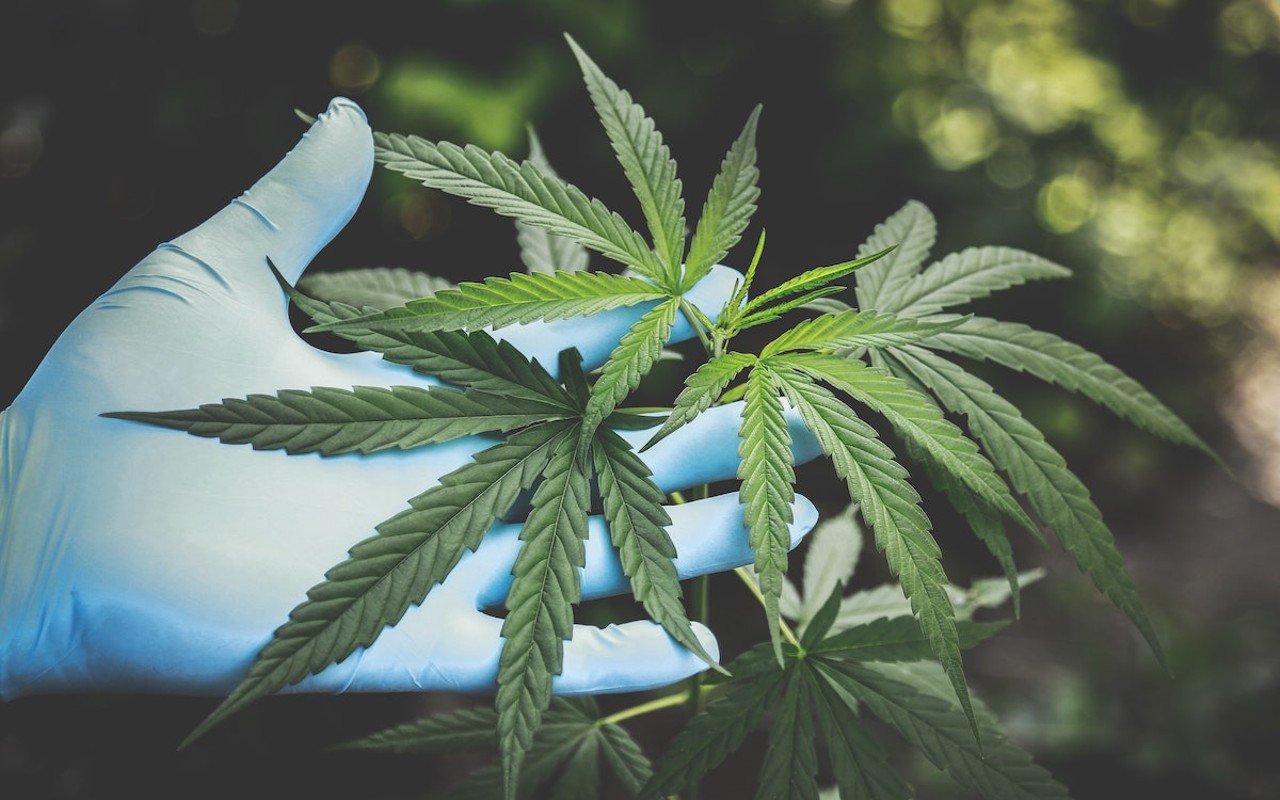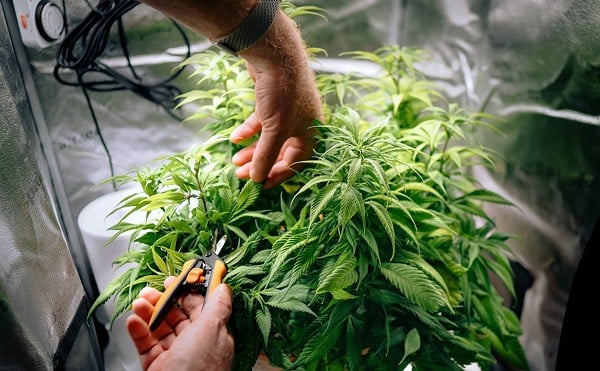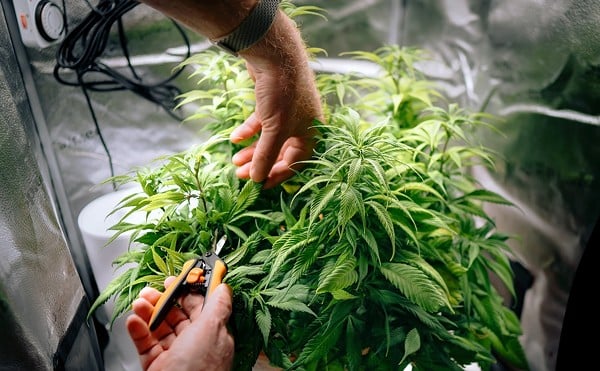
Photo: Pixabay, Pexels
CityBeat sat down with members of the Hamilton County Sheriff’s Department to discuss how deputies determine a driver is under the influence of marijuana.
As Ohioans decide how they will vote on Issue 2 on Nov. 7, which could legalize recreational marijuana in the state, officers may need to prepare for an influx of impaired drivers who cannot be tested with a breathalyzer.
Opponents of Issue 2 claim that, in addition to reasons like risks to children and workplace safety, legalizing marijuana recreationally would lead to a spike in traffic-related crashes and fatalities. Among those opposed are the Ohio Association of Chiefs of Police and the Fraternal Order of Police of Ohio.
Once an officer has enough probable cause to make an OVI arrest, Maddy said they may ask the driver to perform a breathalyzer test or blood or urine test back at the department; Hamilton County deputies do not typically administer these tests roadside.
Hamilton County Sheriff Charmaine McGuffey is taking a neutral stance on the issue.
"If a majority of Ohio voters decide to change the law, I will enforce that law," she told CityBeat. "This ballot issue will not change the law as it applies to anyone under the age of 21. It will not change the way my office enforces the law as to those under 21 in our communities. I respect the judgment of Ohio voters whether to give this additional individual right. I will abide by their judgment.”
Fraternal Order of Police of Ohio president Gary Wolske has echoed crash projections cited by the anti-Issue 2 group Protect Ohio Workers & Families, saying risking lives for the sake of legal marijuana is “cruel and unthinkable.”
"If a majority of Ohio voters decide to change the law, I will enforce that law," she told CityBeat. "This ballot issue will not change the law as it applies to anyone under the age of 21. It will not change the way my office enforces the law as to those under 21 in our communities. I respect the judgment of Ohio voters whether to give this additional individual right. I will abide by their judgment.”
Fraternal Order of Police of Ohio president Gary Wolske has echoed crash projections cited by the anti-Issue 2 group Protect Ohio Workers & Families, saying risking lives for the sake of legal marijuana is “cruel and unthinkable.”
The 10-year data, which comes from the Insurance Institute for Highway Safety, says death rates increased 4.1% and injury rates by 5.8% in states where marijuana was legalized for adult use. Protect Ohio Workers & Families applied this rate to crash statistics from the Ohio Department of Public Safety, projecting that Ohio could see 48 more fatal car crashes and 2,298 more injury crashes annually should Issue 2 pass.
Tom Haren, spokesperson for the Coalition to Regulate Marijuana Like Alcohol, the group behind the push to pass Issue 2, said that drawing a direct line between cannabis legalization and crashes is misleading.
“We know that marijuana stays in your system for several days, if not weeks, so if somebody has a cannabis edible on Wednesday and they get into a fender bender on Saturday, no rational person will say, ‘You know what caused that traffic crash? It was the gummy that you had three and a half days ago,'” Haren said during an Oct. 4 Issue 2 forum.
Driving while high
CityBeat sat down with members of the Hamilton County Sheriff’s Department to discuss how deputies determine a driver is under the influence of marijuana.
“The thing that we lose with the marijuana is the breathalyzer,” said Corporal Tim Maddy of the Hamilton County Sheriff’s Department.
Still, Sergeant Kevin Bley said there is broad overlap in the steps to identify a drunk versus stoned driver.
“It really is the same as if someone is driving under the influence of alcohol,” Bley said. “Marked lanes, if you get behind somebody we’re looking for the same cues. If they’re involved in an automobile crash, weaving, not maintaining their lane.”
Maddy said officers in the Ohio Peace Officer Training Academy go through training to conduct Operating a Vehicle while Impaired (OVI) traffic stops, but because marijuana is not broadly legalized in Ohio, the test subjects can only be drunk.
“They hold an actual course where they’ll bring people in, obviously we don’t do marijuana, but we’ll have some people that are under the influence of alcohol and some people that are not, and these guys go through a full field sobriety test to see if they would arrest them or not,” Maddy said.
Officers get their training on identifying drivers who are potentially on drugs through an additional course, known as Advanced Roadside Impaired Driving Enforcement (ARIDE).
Bley and Maddy stress the importance of taking in as many factors as possible when determining if someone has committed an OVI violation, but they said the “lack of convergence” test taught in ARIDE can uniquely identify a driver who is stoned.
Lack of convergence basically tests the driver’s ability to cross their eyes when focusing on an object placed near the bridge of their nose.
“We’ll do a circle,” Maddy said while gesturing with his pen, then pushing the pen forward, “at that point, one eye will come in and the other eye does not have the strength to come in, it’ll usually fall out and point out somewhere else which shows us they are under the influence of marijuana.”
Once an officer has enough probable cause to make an OVI arrest, Maddy said they may ask the driver to perform a breathalyzer test or blood or urine test back at the department; Hamilton County deputies do not typically administer these tests roadside.
Blood and urine tests
Blood and urine are the only ways police can scientifically prove there is marijuana in someone’s system. Corporal Kirk Caruso said state law does not require a warrant for a sample of either.
“When you go to get your driver’s license, you sign an implied consent form,” said Caruso. “If you refuse to give a breath test or a urine sample or something like that at the direction of an officer, that’s what you’re signing when you go to get your driver’s license.”
Maddy said, while the department is protected by Ohio law to force a sample, the Hamilton County department always gets a warrant first.
“We have never forced anyone,” Maddy said. “If it’s an exigent situation where they’ve caused serious injuries, yes, we could get a search warrant, but we have to have probable cause to write that search warrant and have a judge sign it to either draw the blood or get the blood from the hospital they were transported to.”
Because marijuana can stay in your system for days or weeks, depending on how often you consume, officers refer to a marijuana metabolite chart in the Ohio Revised Code.
Because marijuana can stay in your system for days or weeks, depending on how often you consume, officers refer to a marijuana metabolite chart in the Ohio Revised Code.
“Our lab tests blood, and they can give you a per se level, and it’s testing for what’s most recent. They do have a way of knowing what was most recently ingested compared to what’s been just lingering.”
A lawyer objects
Robert Healey, an attorney who specializes in OVI cases with the Minnillo Law Group in the greater Cincinnati area, told CityBeat he has a problem with the legislature’s threshold for marijuana metabolites.
“They have prohibitive limits for marijuana metabolites in your system, and if you smoke regularly you’re going to be over the limit,” he said. “You could smoke yesterday, you are not under the influence of marijuana, but those metabolites are in your system and the legislature says that’s operating a vehicle under the influence. I have a problem with that.”
While the majority of Healey’s OVI cases are in relation to alcohol, the metabolites test is why Healey said he would caution someone who is being asked to consent to a blood or urine test simply for suspicion of driving under the influence of marijuana.
“The landscape, even as it is right now on the subject, I think would encourage me to tell people to refuse,” he said.
But refusing a test comes with major risks. Healey said drivers often say yes to a test because they can get a lighter punishment for driving under the influence than not consenting to a test at all.
“They incentivize people to take the test by reading them a form when they’re first arrested saying that, on a first offense, if you refuse the test, it’s a one-year suspension administratively from the BMV. If you take the test and test under the legal limit, they don’t suspend you at all. If you take the test and test over the legal limit, it’s a 90-day suspension,” Healey said. “In the case of marijuana, if they think you’re under the influence, then they would ask for urine and you would either consent to that urine screen or refuse it, same thing applies.”
Healey said Ohio OVI law still hasn’t caught up to the legalization of medical cannabis in the state. He offered an example of a case where a client was charged with an OVI for driving while over the legal limit of amphetamines in their system. Some of the charges could be resolved in court because the driver was taking the amphetamines as prescribed by their doctor. But with marijuana, Healy said the “water gets muddy,” even in a state that legalized it medically.
“It is not a prescription,” Healey said. “Ohio’s recognized that it may have legitimate medical purposes, but they don’t prescribe it, they recommend it. You don’t get it from a pharmacy, you get it from a dispensary. The law hasn’t caught up with how to deal with that quite yet. There’s not a lot of law surrounding marijuana being in people’s systems in Ohio.”
Even still, Healey said Ohio doesn’t deal with a lot of OVI cases related to marijuana. He doesn’t think that’s going to change much, even if Issue 2 passes in November.
“If they made it recreational where everybody could go get it and smoke it, I don’t think it would really change the landscape of what we’re dealing with. People that wanted to smoke marijuana did, regardless of what the law was,” Healey said.
Ohioans will vote on Issue 2 on Nov. 7.
Ohioans will vote on Issue 2 on Nov. 7.
Follow CityBeat's staff news writer Madeline Fening on Twitter and Instagram.
Subscribe to CityBeat newsletters.
Follow us: Apple News | Google News | NewsBreak | Reddit | Instagram | Facebook | Twitter | Or sign up for our RSS Feed
Subscribe to CityBeat newsletters.
Follow us: Apple News | Google News | NewsBreak | Reddit | Instagram | Facebook | Twitter | Or sign up for our RSS Feed









